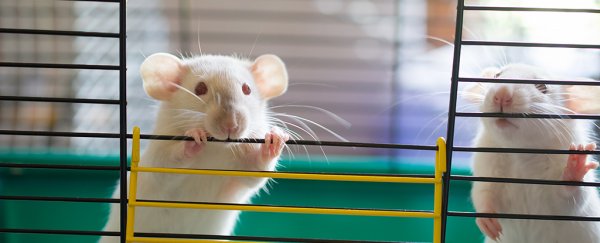With age comes experience. And with experience come sore backs, tired bones, and increased risks from a large number of diseases.
Scientists have long been trying figure out how to stop these aches and pains in our twilight years, and to make us live longer and healthier lives at the same time.
While it's likely a long way off from being ready for humans, a new study investigating the long-term 'partial reprogramming' of cells in mice appears to have produced some very intriguing results.
"We are elated that we can use this approach across the life span to slow down aging in normal animals," says senior author and Salk Institute developmental biologist Juan Carlos Izpisua Belmonte. "The technique is both safe and effective in mice."
The team found that tissues in the kidney and skin of the mice were 'rejuvenated' – meaning that expressions of genes which cause inflammation, cell death, and stress response were lowered in the treated animals. The skin was even able to proliferate more and scar less – the opposite of what usually happens in older age.
Plus, the animals' epigenetic clocks – a measure of the patterns of DNA methylation levels attributed to aging – seemed to be wound back.
"In addition to tackling age-related diseases, this approach may provide the biomedical community with a new tool to restore tissue and organismal health by improving cell function and resilience in different disease situations, such as neurodegenerative diseases," Izpisua Belmonte says.
That's a long way away yet, as this research has only been conducted in mice thus far, but the treatment appears to be safe and effective in the long term, and could – hypothetically speaking – one day help humans stave off some of the worst parts of aging, if the effects can indeed be replicated in people.
In the study, the researchers experimented with four well-known proteins that regulate the expression of DNA – Oct4, Sox2, Klf4 and c-Myc – known collectively as "Yamanaka factors" after the man who pioneered the technique in stem cells.
Although this technique can be used to turn adult cells back into stem cells, the current team had previously shown it can also be used to 'partially reprogram' the cells by reverting them into a more youthful state, but not completely becoming a stem cell again.
If the same thing were done to enough cells in an animal's body, this could potentially make the whole organism's body clock seem younger.
With this already known, the researchers wanted to look at what would happen to these mice when the Yamanaka factors were applied longer term.
In the new research, the factors were used in three different ways. The first trial was short: A group was treated with the factors for one month when they were 25 months old (equivalent to around 80 years old in humans).
The second and third groups had longer-term treatments. One received regular doses from 15 to 22 months (equivalent to ages 50-70 in humans), and the other received regular doses from 12 to 22 months (ages 35-70 in humans).
The mice treated for just one month didn't show any of the age-reversing qualities, but the two longer treatment groups showed signs of rejuvenation without any increased risk of cancer or other health problems.
"Overall, this study provides provocative hints that long-term partial reprogramming holds promise as an intervention that might restore and rejuvenate the functions of some tissues," researchers Arianna Markel and George Q. Daley from Boston Children's Hospital, who weren't involved in the study, explain in an accompanying commentary on the research.
"It is especially notable that partial reprogramming successfully elicits systemic transcriptomic, metabolomic, and lipidomic changes, and alters the epigenetic clock. Moreover, observing these results in a normally aging mouse model provides further evidence that this approach may be beneficial beyond disease states."
Although the method is likely many years away from providing a human 'fountain of youth', it's still an exciting development in anti-aging science, and one that just might help ease the pain and damage of getting old one day.
The research has been published in Nature Aging.
